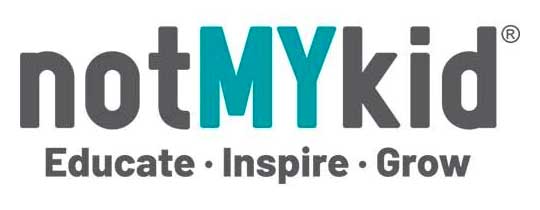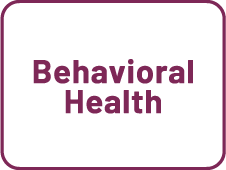Self-care is not selfish.
Read that again: self-care is not selfish.
As parents, our natural instinct is to put our kids first and ourselves somewhere after when it comes to making sure needs are met. We often sacrifice our own wellbeing and set aside even the most basic of personal needs for the benefit of our kids. It’s understandable because as a parent, your children should be your priority.
However, as well-intentioned as this practice is, it can not only be counterproductive, but can actually end up negatively affecting our kids as well as us. It’s hard to be the best parent you can be if your own life is out of balance. That’s why self-care is so important, especially during the holiday season, which can be particularly stressful for many people.
When you hear the phrase “self-care,” what comes to mind? Often the first thoughts related to self-care are regarding diet and exercise. Physical health is definitely important, but it’s only one of many factors involved with overall wellbeing. In fact, according to SAMHSA (the Substance Abuse and Mental Health Services Administration), there are eight primary dimensions to optimize an individual’s overall holistic wellness: emotional, spiritual, intellectual, physical, environmental, financial, occupational, and social. The more pieces of this framework that we can put into place correctly, securely, and consistently for ourselves, the healthier we will be overall and the more we will be able to meet the needs of our kids and family.
Emotional wellness is the ability to cope with stress, express emotions in a healthy way, respect the feelings of others, and feel positive about your own life. Simple steps that can be taken to be intentional about self-care in this dimension include practicing gratitude, identifying and recognizing your own emotional triggers, establishing clear and healthy personal boundaries, and being conscious of what emotions you’re feeling and what kind of self-talk you engage in.
Spiritual wellness is finding a sense of meaning and purpose in life and defining your own core values and beliefs. It also involves a sense of awareness regarding your relationship to the world around you. If you’re a person of faith, self-care in the realm of spiritual wellness can involve prayer, reading sacred texts, fellowship with those who share your faith, and intentional connection with your higher power. For those who don’t follow a particular faith, spiritual wellness can be improved through meditation, time spent unplugged from life’s distractions, and time outdoors.
Intellectual wellness involves expanding knowledge and skills, sharing knowledge and skills, opening the mind to new ideas, and engaging in creative and mentally stimulating activities. Maintaining wellness in this area can include things like reading books, playing a challenging game, learning a new language, listening to intellectually engaging podcasts, learning how to play a musical instrument, or working to pick up a new skill. As little as 30 minutes each day of intentional intellectual engagement can have a positive effect.
Physical wellness is caring for the body in order to be healthy now as well as in the future. This includes a focus on exercise, nutrition, hydration, and adequate sleep. Steps you can take to ensure self-care in the physical dimension include eating healthy (incorporating plenty of fresh fruits and vegetables), maintaining a consistent exercise schedule (at least 30 minutes a day), being intentional about getting adequate sleep (including ending electronics use at least two hours prior to bedtime), spending time outdoors, reducing exposure to stressful situations (i.e. taking a break from watching or reading the news), and strengthening your immune system. Keep in mind that regular exercise does not require access to a gym. Exercise can be as simple as going for a walk, a run, or a hike in your neighborhood, or doing bodyweight exercises like push-ups or yoga in your own home.

Environmental wellness is understanding how the various environments you encounter (natural, built, social) can affect your health and wellbeing, and being intentional about creating a positive environment for yourself. Ways to do this include organizing and decluttering your living and work spaces, improving the air quality in your environment with potted plants, adjusting lighting by using bulbs that create less harsh light, reducing unnecessary noise and distraction in your environment, and taking periodic breaks from your work environment to get outside.
Financial wellness involves managing your resources in order to live within your means and feel satisfaction with your current and future financial situations. This one is particularly important to be conscious of during the holidays, when Black Friday and pre-Christmas sales can make it tempting to spend beyond your budget. Steps you can take to maintain financial wellness include setting realistic financial goals and budgets, planning for short- and long-term needs, making informed and researched financial decisions, not comparing your financial situation with that of others, and asking for professional help with sorting out challenges.
Occupational or vocational wellness requires participating in work that provides personal satisfaction and life enrichment that are in alignment with your values, goals, and lifestyle. Given the large percentage of our lives that we will spend at work, finding a job or career that allows us to be occupationally healthy is crucial and can have a profound effect on many of the other dimensions of wellness. Achieving occupational wellness involves working in an industry, career, and company that you find meaningful and rewarding, working in an supportive and healthy environment, creating connections with your coworkers and supervisors, and maintaining a healthy work/life balance. If your current profession and position meet all of your occupational needs with the exception of feeling like you’re contributing something truly meaningful to the world, you might consider also volunteering for an organization or community group whose mission you find important.
Social wellness may be last on the list, but it certainly isn’t least. Humans are social animals and require connection with others in order to truly thrive and maintain overall wellness. In fact, a healthy social wellness dimension can sometimes be a safety net for us when our other dimensions of wellness may be lagging behind. Social wellness is based on developing a sense of connection, belonging, and a well-developed support system. Ways to achieve this include creating and maintaining healthy friendships and relationships, seeking to make at least one new social connection daily, seeking advice from peers and support groups, joining a book club or other group, doing random kind things for others, allowing others to do kind things for you, and knowing when to end a particular social connection in order to maintain your personal boundaries and health.
Achieving and maintaining wellness in these eight dimensions isn’t complicated, but does require effort. However, the benefits by far outweigh the costs. Not only can we implement these concepts and suggestions into our own lives as parents, we can teach them to our kids while serving as a model for how they work. That will set us up for a healthier, more well-balanced life in general. And that may be the best gift we could possibly give our kids.




